Abstract
The social interaction between a behaviorally disordered preschool child and her classroom peers was measured under two conditions of contingent adult attention: (1) verbal praise and physical contact directed to the target subject's peers for appropriate interaction with the target subject, and (2) verbal praise and physical contact directed specifically to the target subject for engaging in appropriate interaction with peers. Continuous measures of interactive behavior were made during baseline, intervention, and return to baseline conditions. Results indicated that application of experimental contingencies, to peers (Condition 1) rapidly increased appropriate social behaviors by the peers and also by the target subject. When experimental contingencies were applied to the target subject (Condition 2), a similar increase in appropriate social behaviors was noted for both the target subject and the peers. Additionally, during Conditions 1 and 2 the recipient(s) of contingent adult attention initiated more appropriate social contacts than did the interacting partner(s).
Full text
PDF
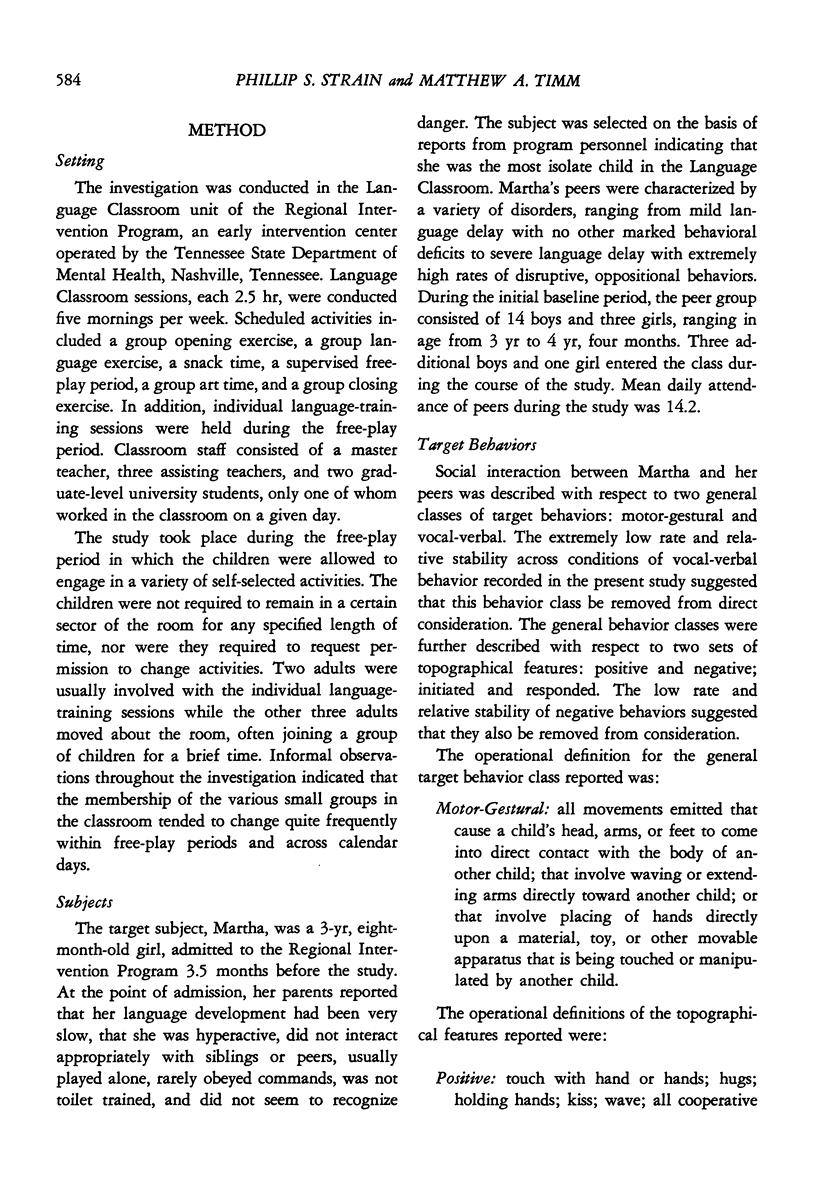
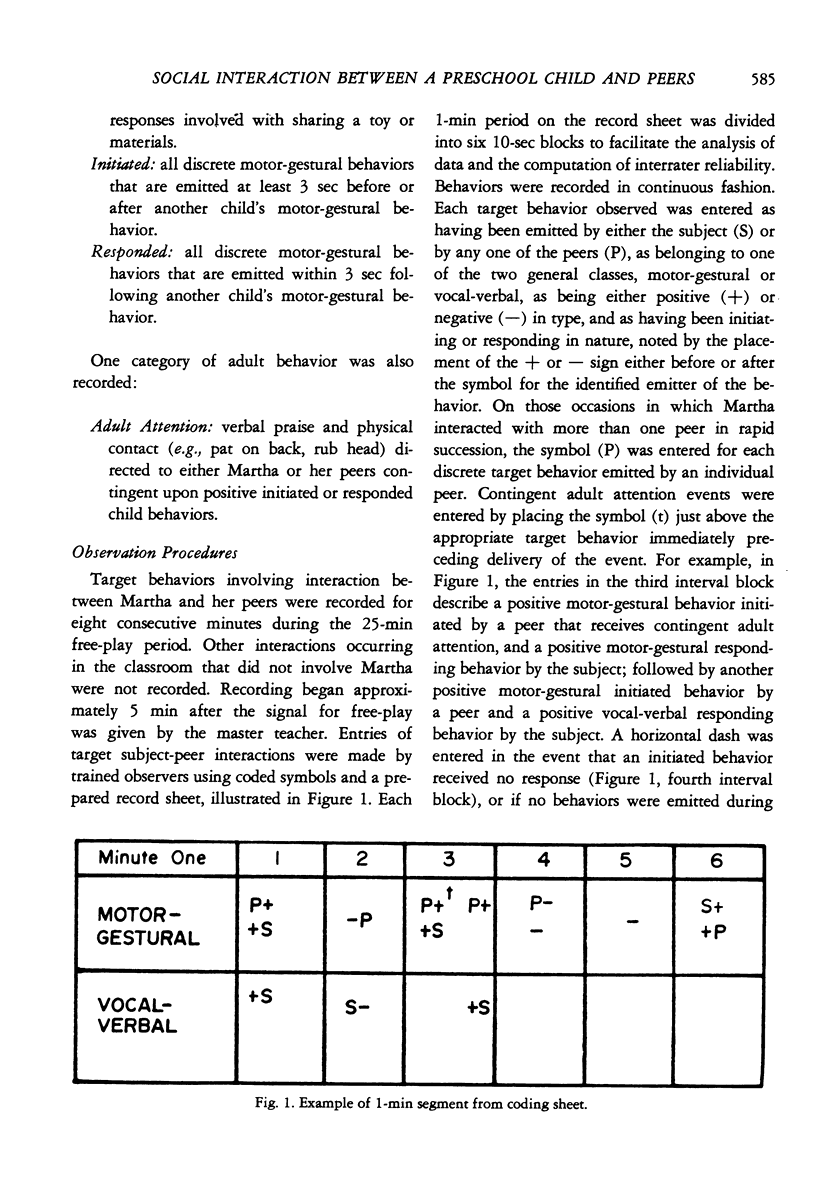
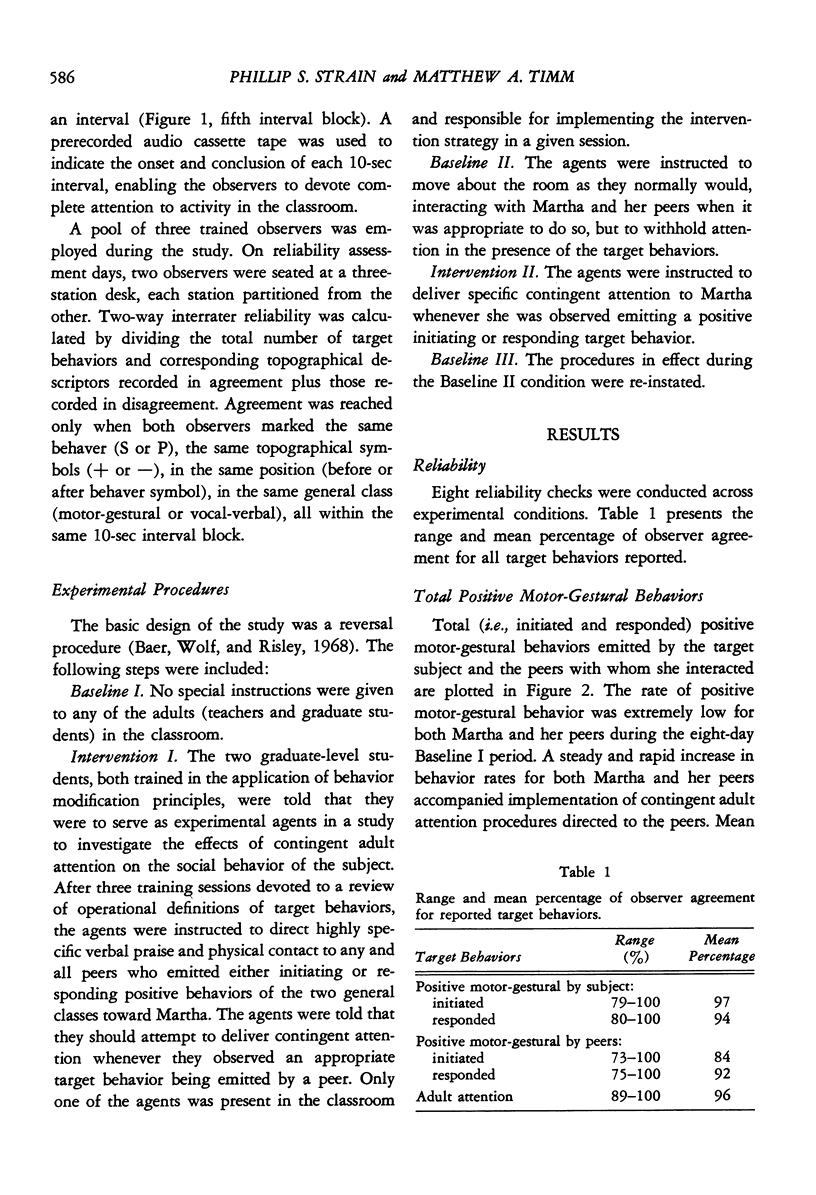
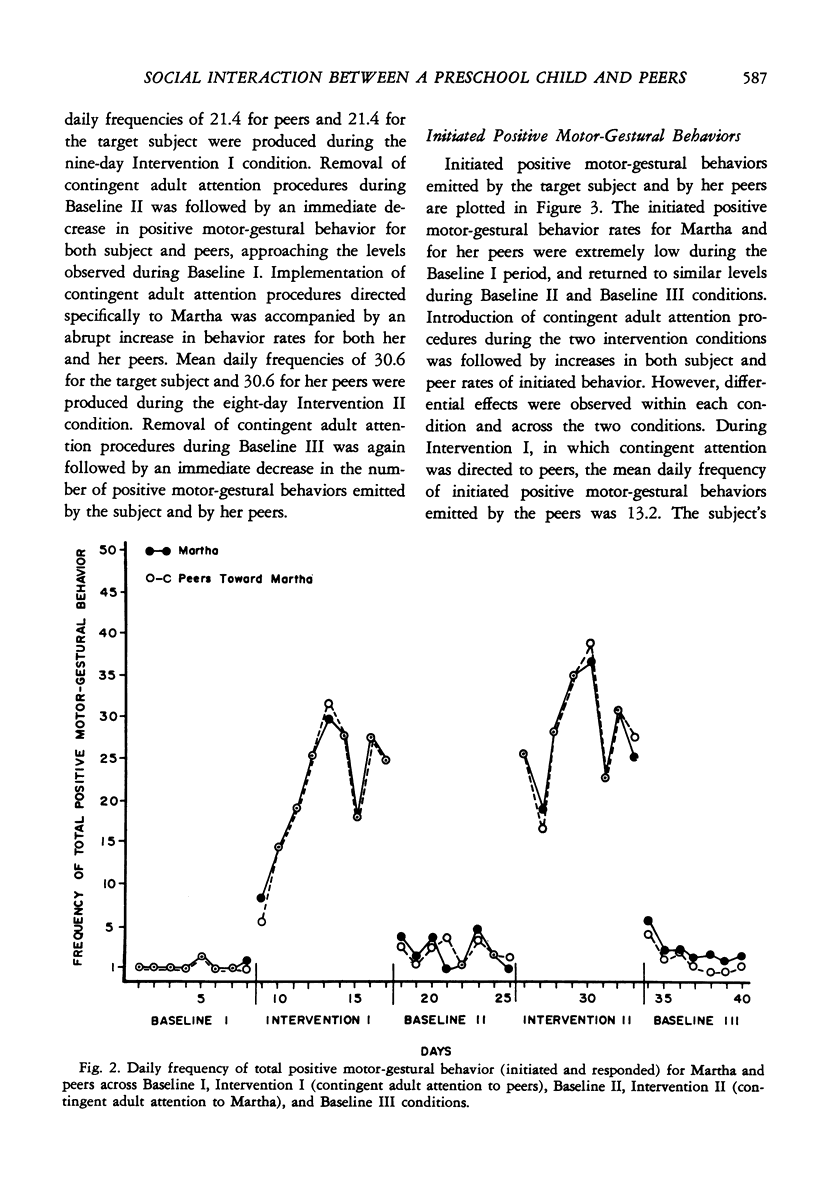
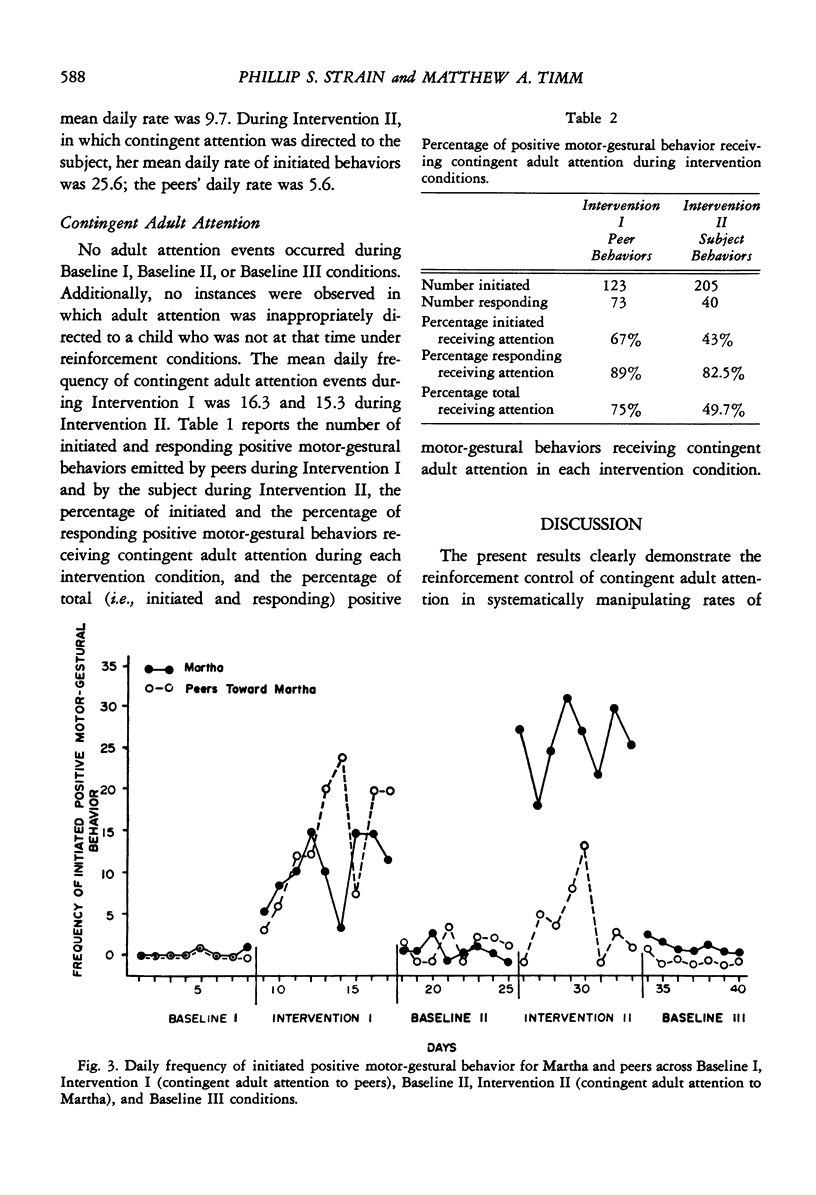
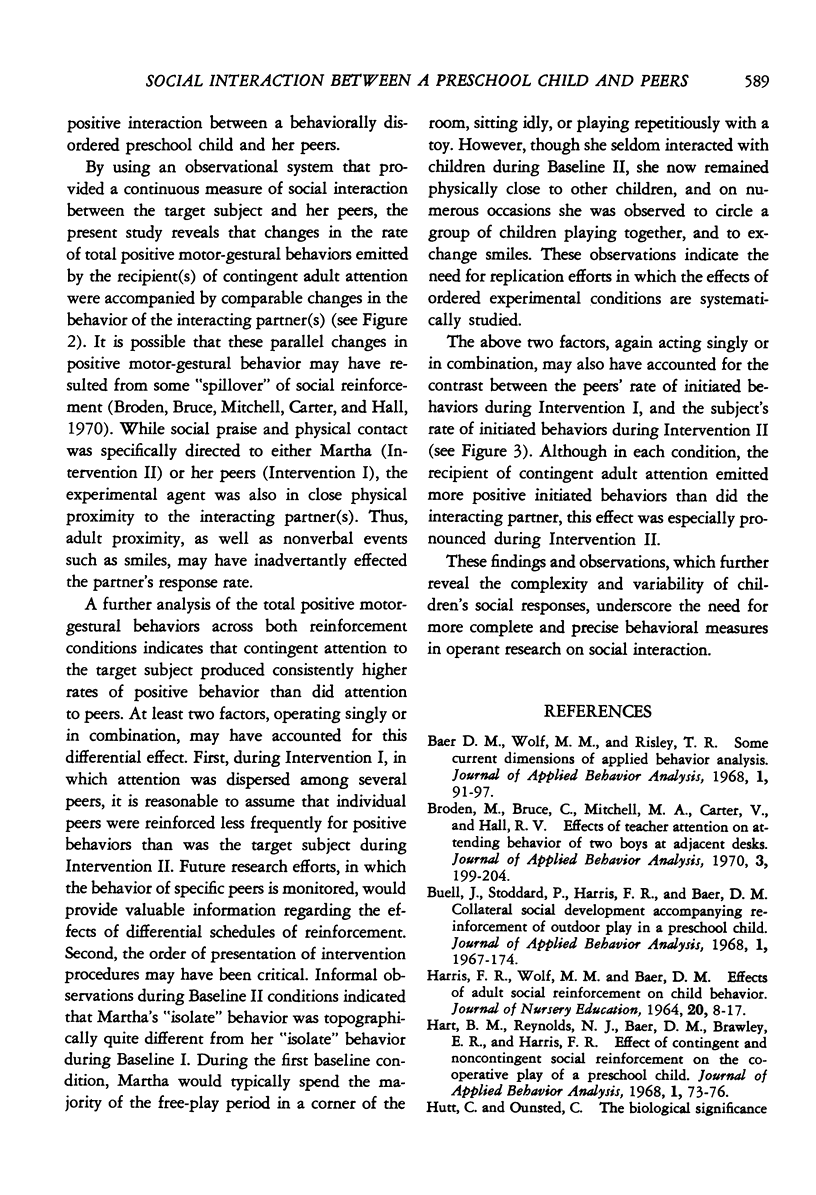
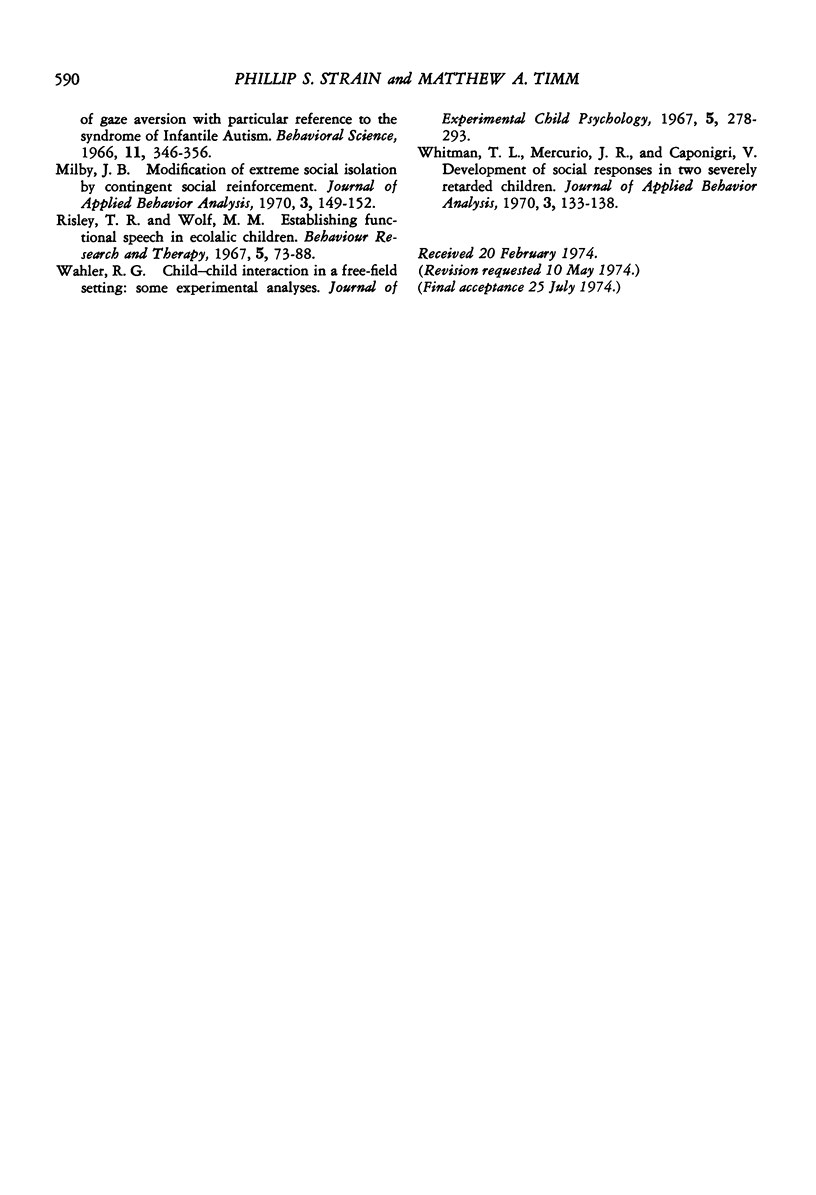
Selected References
These references are in PubMed. This may not be the complete list of references from this article.
- Baer D. M., Wolf M. M., Risley T. R. Some current dimensions of applied behavior analysis. J Appl Behav Anal. 1968 Spring;1(1):91–97. doi: 10.1901/jaba.1968.1-91. [DOI] [PMC free article] [PubMed] [Google Scholar]
- Broden M., Bruce C., Mitchell M. A., Carter V., Hall R. V. Effects of teacher attention on attending behavior of two boys at adjacent desks. J Appl Behav Anal. 1970 Fall;3(3):199–203. doi: 10.1901/jaba.1970.3-199. [DOI] [PMC free article] [PubMed] [Google Scholar]
- Hart B. M., Reynolds N. J., Baer D. M., Brawley E. R., Harris F. R. Effect of contingent and non-contingent social reinforcement on the cooperative play of a preschool child. J Appl Behav Anal. 1968 Spring;1(1):73–76. doi: 10.1901/jaba.1968.1-73. [DOI] [PMC free article] [PubMed] [Google Scholar]
- Hutt C., Ounsted C. The biological significance of gaze aversion with particular reference to the syndrome of infantile autism. Behav Sci. 1966 Sep;11(5):346–356. doi: 10.1002/bs.3830110504. [DOI] [PubMed] [Google Scholar]
- Milby J. B. Modification of extreme social isolation by contingent social reinforcement. J Appl Behav Anal. 1970 Summer;3(2):149–152. doi: 10.1901/jaba.1970.3-149. [DOI] [PMC free article] [PubMed] [Google Scholar]
- Risley T., Wolf M. Establishing functional speech in echolalic children. Behav Res Ther. 1967 May;5(2):73–88. doi: 10.1016/0005-7967(67)90001-0. [DOI] [PubMed] [Google Scholar]
- Wahler R. G. Child-child interactions in free field settings: some experimental analyses. J Exp Child Psychol. 1967 Jun;5(2):278–293. doi: 10.1016/0022-0965(67)90013-6. [DOI] [PubMed] [Google Scholar]
- Whitman T. L., Mercurio J. R., Caponigri V. Development of social responses in two severely retarded children. J Appl Behav Anal. 1970 Summer;3(2):133–138. doi: 10.1901/jaba.1970.3-133. [DOI] [PMC free article] [PubMed] [Google Scholar]


